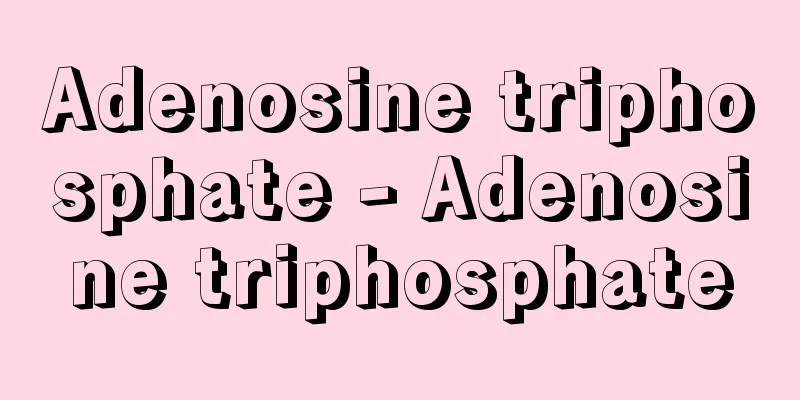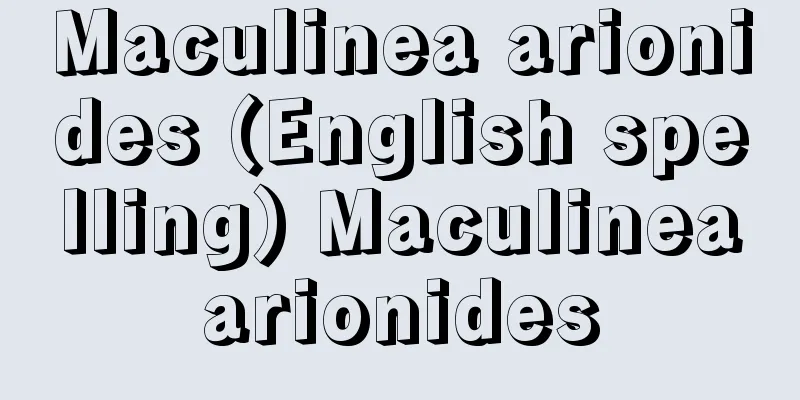Flowering - Kaika

|
This refers to the phenomenon in which flowers, the reproductive organs of plants, open. In herbaceous plants, once the plant body has completed a period of vegetative growth, flower buds are formed at the shoot apex or lateral buds. This occurs because the differentiation of leaf primordia (embryonic leaves at the early stage of development) during vegetative growth is switched to the differentiation of flower primordia. This switch is based on genetic information unique to each plant species, but is often influenced by environmental factors such as light and temperature. The formed flower buds develop and grow, eventually blooming to carry out the reproductive function. The various conditions for flower bud formation are discussed below. [Masayuki Katsumi] Photoperiodic conditionsSome plants require exposure to long or short nights out of the 24 hours of the day in order to form flower buds; they are called short-day (long night) plants and long-day (short night) plants, respectively. For both of these plants, the dark period (length of night) is the determining factor for flower bud formation. For example, in short-day plants such as cocklebur, if light is irradiated for even a short period in the middle of the required dark period (approximately 9 hours or more) (called a light break), flower buds do not form. This shows that a certain amount of continuous dark period is necessary for flower bud formation in short-day plants. In contrast, in long-day plants such as broad beans, flower buds are formed when light is broken under conditions of a long dark period in which flower bud formation does not occur. In other words, flower bud formation in long-day plants occurs only when the dark period is short or shorter than a certain period. The wavelength of light that is effective for photointerruption is red light. When red light is irradiated followed by far-red light (near-infrared light), the effect of photointerruption is cancelled, which suggests that phytochrome, a protein pigment that senses light conditions and regulates various functions, is involved. The light period (daytime) is important as a period for photosynthesis in comparison with the dark period. In short-day plants, even if the dark period is long enough, if photosynthesis is not sufficient before the dark period, flower bud formation is suppressed. [Masayuki Katsumi] Flowering hormoneIt is the leaves that receive photoperiodic stimulation in plants. Soviet plant physiologist MH Chailakhyan hypothesized that a flowering hormone was produced in the leaves and moved to the buds, where it was its action that caused flower bud formation, and named this hormone florigen (1937). The existence of flowering hormones was proven by the following grafting experiment. When a cocklebur that had been treated with short days was grafted onto a cocklebur grown under long-day conditions, flower buds were formed on both. Furthermore, when a long-day plant was grafted onto a short-day plant, flower buds were formed on both, regardless of the photoperiodic conditions. These facts indicate that the flowering hormone was transferred from one individual to the other. Although much research has been done on the identity of the flowering hormone, it is still unknown. [Masayuki Katsumi] Temperature conditionsSome plants must endure a period of low temperatures in order to form flower buds. For example, autumn wheat, when germinated seeds are placed at 0-10°C for several weeks, grows and forms flower buds. Some plants, such as henbane and carrot, require a low temperature period when they are mature. This process of enabling flower bud formation through low temperature treatment is called vernalization. Some biennial plants require long-day conditions after a low temperature period. It is not clear whether vernalization produces flowering hormones, but gibberellins (a plant hormone) are often replaced by vernalization. [Masayuki Katsumi] [Reference] |Source: Shogakukan Encyclopedia Nipponica About Encyclopedia Nipponica Information | Legend |
|
植物の生殖器官である花が開く現象をいう。草本性植物では、植物体はある期間の栄養成長を終えると、茎頂または側芽で花芽が形成される。これは、栄養成長のときの葉原基(発生初期の胚状(はいじょう)の葉)の分化が花原基の分化に切り替えられるためである。この切り替えは、それぞれの植物種に固有の遺伝情報に基づくものであるが、多くの場合、光や温度などの環境要因の影響を受ける。形成された花芽は発達して大きくなり、最後に開花して生殖作用を行う。以下、花芽形成のための諸条件に触れる。 [勝見允行] 光周条件ある種の植物には、花芽形成のために1日24時間のうち、長い夜、あるいは短い夜にさらされることが必要とされるものがあり、それぞれ短日(長夜)植物、長日(短夜)植物とよばれる。これらの植物は、いずれも暗期(夜の期間)が花芽形成の決め手となる。たとえば、オナモミのような短日植物では、必要な暗期(約9時間以上)の真ん中で短時間でも光を照射すると(光中断(こうちゅうだん)という)、花芽形成がおこらない。したがって、短日植物の花芽形成には一定以上の連続した暗期が必要なことがわかる。これと反対に、ソラマメのような長日植物では、花芽形成のおこらない長い暗期の条件下で光中断を行うと、花芽形成がみられる。つまり、長日植物の花芽形成は一定以下の短い暗期のときにのみおこるわけである。 光中断に有効な光の波長は赤色光である。赤色光照射に引き続き遠赤色光(近赤外光)を照射すると、光中断の効果は打ち消されるので、光条件を感知して、諸機能を調節するタンパク質色素であるフィトクロムが関係していることが考えられる。 暗期に対して明期(昼の時間)は光合成を行う期間として重要である。短日植物ではいくら十分に長い暗期を与えても、暗期に入る前に光合成が十分行われないと花芽形成が抑えられる。 [勝見允行] 花成ホルモン植物が光周刺激を受けるのは葉である。ソ連の植物生理学者チャイラヒヤンM. H. Chailakhyanは、葉で花成ホルモンがつくられて芽に移動し、その働きで花芽形成がおこると考え、このホルモンをフロリゲンflorigenと名づけた(1937)。花成ホルモンの存在は次のような接木(つぎき)実験で証明される。短日処理をしたオナモミを長日条件で育てているオナモミに接木すると、どちらにも花芽形成がみられる。また、長日植物と短日植物の接木では、どちらの光周条件下でも両者に花芽形成がみられる。このような事実は、花成ホルモンが一方の個体から他方の個体へ移動したことを示すものである。花成ホルモンの本体については、多くの研究がなされているが、まだわかっていない。 [勝見允行] 温度条件花芽形成のために、一定期間、低温の時期を経なければならない植物がある。たとえば、秋播(ま)きコムギは、種子が発芽した状態で0~10℃に数週間置かれると生育してから花芽を形成する。ヒヨスやニンジンのように成体の状態で低温期を必要とする植物もある。このように低温処理により花芽形成を可能にすることを春化(しゅんか)(バーナリゼーション)という。二年生植物には低温期のあと長日条件を要求するものがある。春化処理によって、花成ホルモンが生成されるかどうかは明らかでないが、ジベレリン(植物ホルモン)が春化処理に置き換わる場合が多い。 [勝見允行] [参照項目] |出典 小学館 日本大百科全書(ニッポニカ)日本大百科全書(ニッポニカ)について 情報 | 凡例 |
>>: Change of marriage - Kaika
Recommend
Bulbar conjunctiva - Bulbar conjunctiva
…it allows smooth eye movement and blinking. The ...
Iwashide - Sardine
A deciduous shrub of the Betulaceae family (APG c...
Ancient History - Koshiden
A book written by Hirata Atsutane. 37 volumes. It...
Itohkame Bug (Thread Bug) - Itohkame Bug
A general term for insects belonging to the Hemipt...
Tenmon
One of the volumes in the ancient Chinese literary...
saint
…His penance was said to have been a fierce strug...
Ariake Fuji
Another name for Mount Tsukumo (Mount Kujuku) in K...
Addaura - Addaura
…In October of the same year, it was integrated i...
Percussion (English spelling)
A general term for percussion instruments such as ...
Song cut - Utagire
〘 noun 〙 A book of waka poems or scrolls with hand...
Continuation of the ancient story - Zokukojidan
A collection of tales from the early Kamakura per...
Perrot, Jules
Born: August 18, 1810, Lyon [Died] August 18, 1892...
Sexually Transmitted Diseases
A branch of clinical medicine. Sexually transmitte...
Yingkou
A prefecture-level city in the southern part of L...
Constitutional monarchy (English spelling)
A political system in which the power of the mona...









